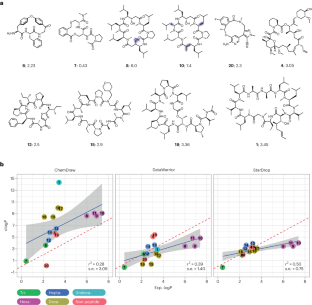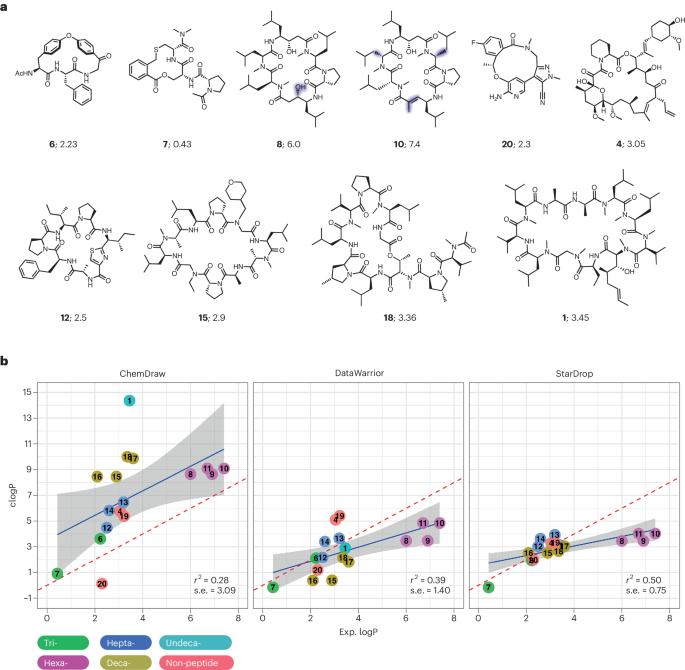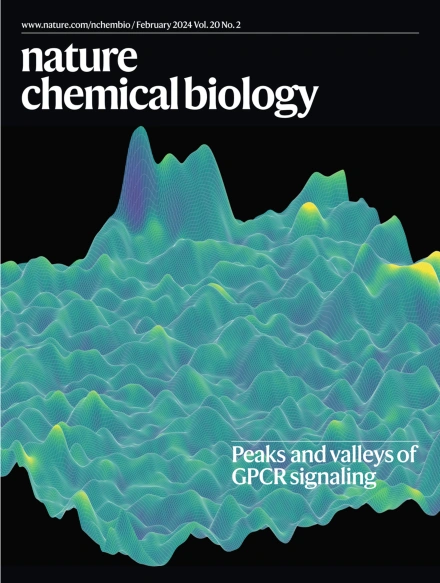设计环肽时要注意计算出的极端亲油性
IF 12.9
1区 生物学
Q1 BIOCHEMISTRY & MOLECULAR BIOLOGY
引用次数: 0
摘要
口服生物可用的高分子量大环肽可抑制难以用药的蛋白质与蛋白质之间的相互作用,具有很高的治疗价值,最近有人提出了大环肽的设计规则。在此,我们强调了这些规则的危险性,因为它们提供了临床候选药物所需亲油性的假象。本文章由计算机程序翻译,如有差异,请以英文原文为准。


Beware of extreme calculated lipophilicity when designing cyclic peptides
Orally bioavailable, high molecular weight macrocyclic peptides that inhibit difficult-to-drug protein–protein interactions are of high therapeutic value, and rules for their design were proposed recently. Here, we emphasize the danger of rules that provide a false impression of the lipophilicity required of a clinical candidate.
求助全文
通过发布文献求助,成功后即可免费获取论文全文。
去求助
来源期刊

Nature chemical biology
生物-生化与分子生物学
CiteScore
23.90
自引率
1.40%
发文量
238
审稿时长
12 months
期刊介绍:
Nature Chemical Biology stands as an esteemed international monthly journal, offering a prominent platform for the chemical biology community to showcase top-tier original research and commentary. Operating at the crossroads of chemistry, biology, and related disciplines, chemical biology utilizes scientific ideas and approaches to comprehend and manipulate biological systems with molecular precision.
The journal embraces contributions from the growing community of chemical biologists, encompassing insights from chemists applying principles and tools to biological inquiries and biologists striving to comprehend and control molecular-level biological processes. We prioritize studies unveiling significant conceptual or practical advancements in areas where chemistry and biology intersect, emphasizing basic research, especially those reporting novel chemical or biological tools and offering profound molecular-level insights into underlying biological mechanisms.
Nature Chemical Biology also welcomes manuscripts describing applied molecular studies at the chemistry-biology interface due to the broad utility of chemical biology approaches in manipulating or engineering biological systems. Irrespective of scientific focus, we actively seek submissions that creatively blend chemistry and biology, particularly those providing substantial conceptual or methodological breakthroughs with the potential to open innovative research avenues. The journal maintains a robust and impartial review process, emphasizing thorough chemical and biological characterization.
 求助内容:
求助内容: 应助结果提醒方式:
应助结果提醒方式:


